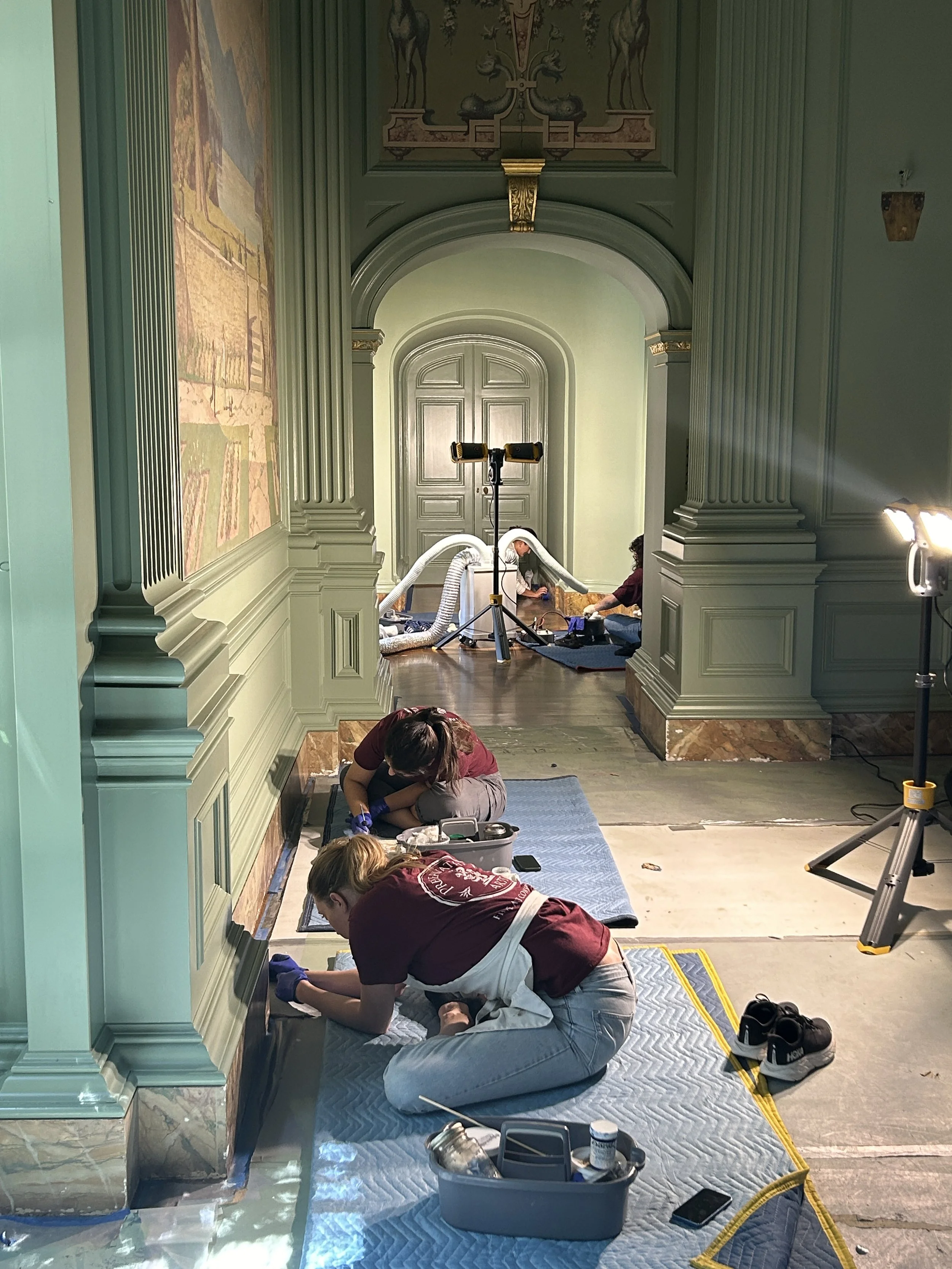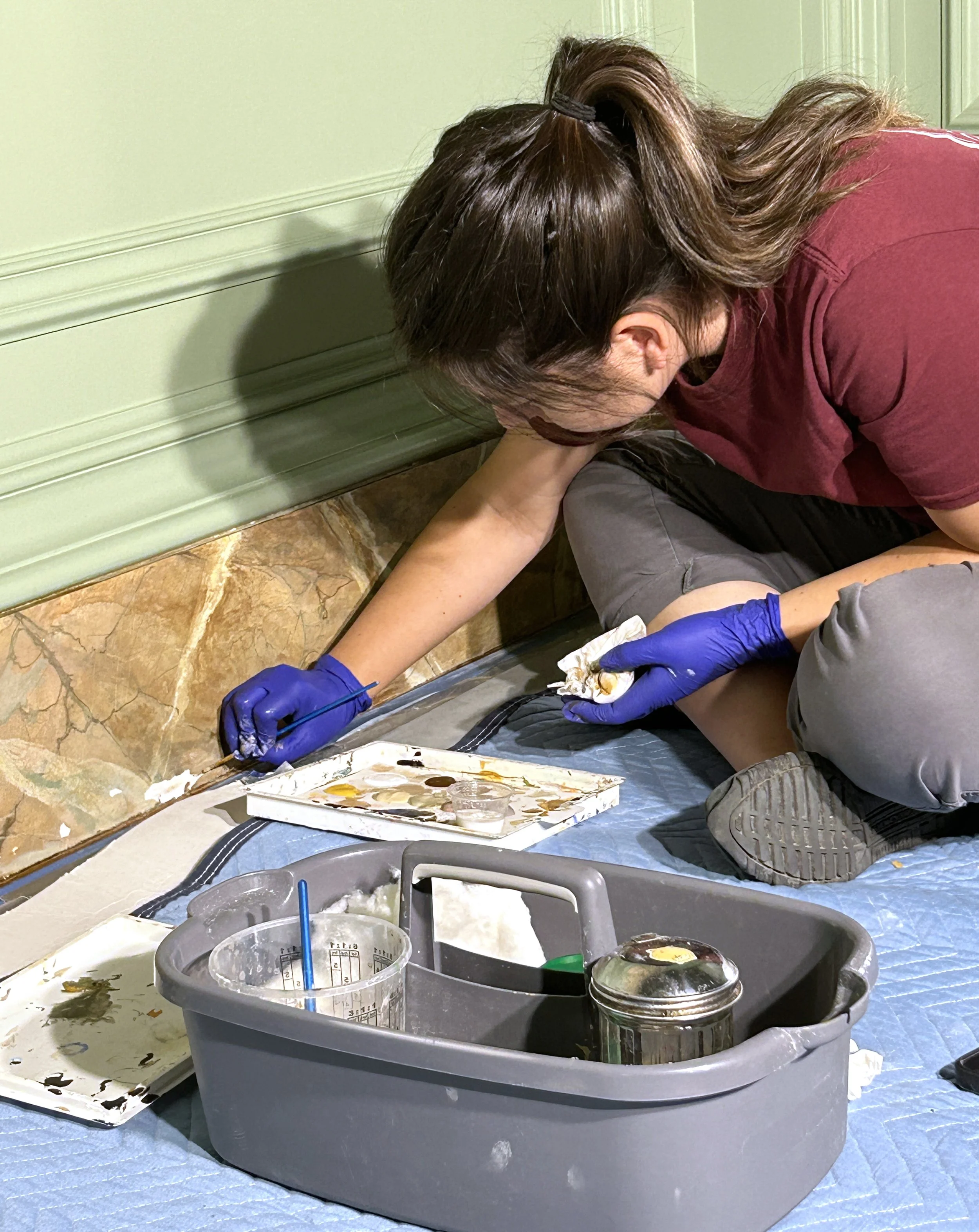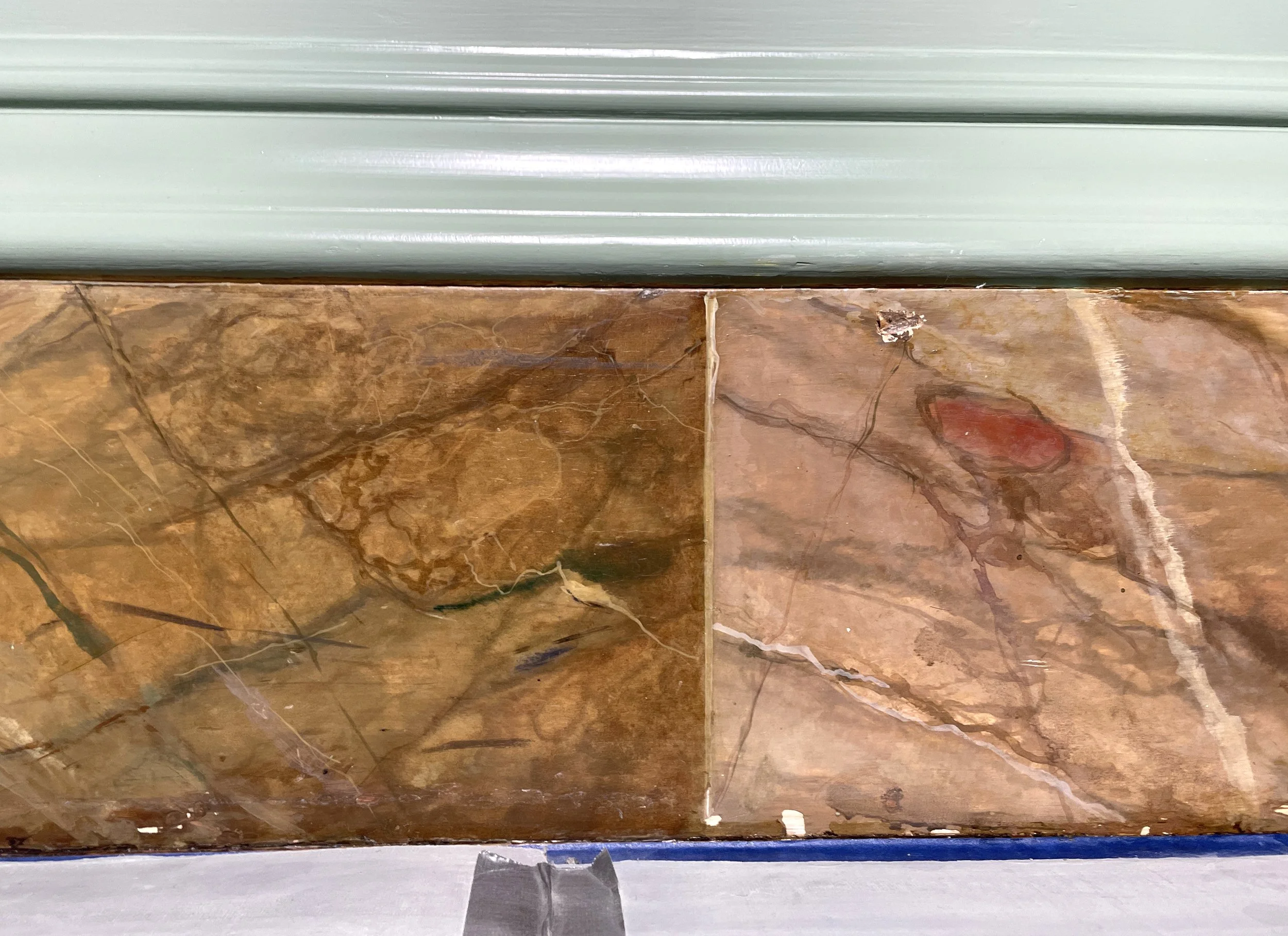Onsite: Filoli Historic House & Garden
Construction of the Filoli Historic House & Garden in Woodside began in 1915, funded by Mr. and Mrs. William Bowers Bourn II., prominent San Franciscans who owned the Empire Gold Mine as well as the Spring Valley Water Company. They went on to inhabit the estate from 1917 to 1936, before it was sold to the Roth Family in 1937 and subsequently donated to the National Trust for Historic Preservation. Since 1975, the intention has been to maintain Filoli for the enjoyment and inspiration of future generations: learn more about Filoli’s mission and programming.
The ballroom murals were completed in 1921 by the American painter Ernest Peixotto for the Bourn family and depict an atmospheric Irish landscape. Peixotto created these enormous canvases offsite, and they were installed to evoke Muckross Estate where the Bourn’s daughter lived, after Mr. Bourn had a stroke and could no longer leave Filoli. The ballroom was designed for entertaining and is the most elaborate room in the mansion, with its Versailles-inspired ornate gilded moldings, expansive windows, monumental murals, and grand chandeliers.
To start the process in January of 2024, the Preservation Arts team conducted assessment and testing of the murals, gilded moldings, and decorative baseboards to determine proper treatment of the various surfaces in the ballroom. The murals are in very good overall condition, but our conservation team observed minor impact damages, heavy surface grime, and soot accumulation during the testing process. The moldings are the original genuine gold leaf, but after decades of use exhibit heavy surface dirt, handling marks, as well as chips and losses to the wood, primer, and gilding. The condition necessitated that the molding and decorative elements of the ballroom be partially re-gilded.
The wood baseboards were painted to mimic the pink marble of the ballroom’s central fireplace. They have a thick and deteriorating coating, a significant amount of old retouching, and numerous impact damages, particularly in corners and where the baseboard meets the floor. After testing, our conservators determined that the yellowed coating could successfully be removed, which would make the baseboards more congruent with the rest of the decorative elements in the room. In July, Preservation Arts teams completed the treatment of the baseboards and will begin the process of re-gilding and mural cleaning through the end of September.
Please follow our progress through Preservation Arts and Filoli social media channels. If you visit the historic estate, you can observe our experts in action through the fall.
Conservators during gilding application.
Detail of baseboards, during varnish removal: before varnish removal (left) and after (right).





